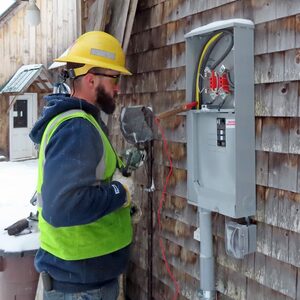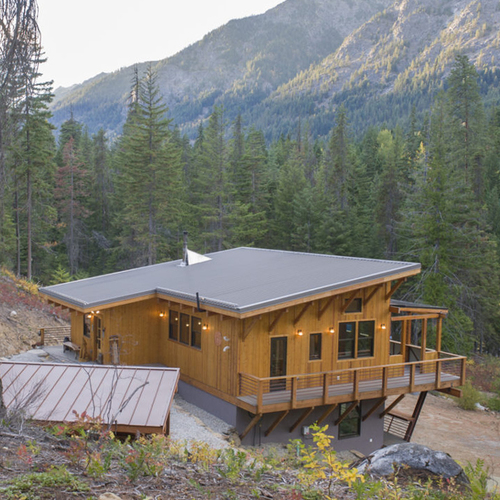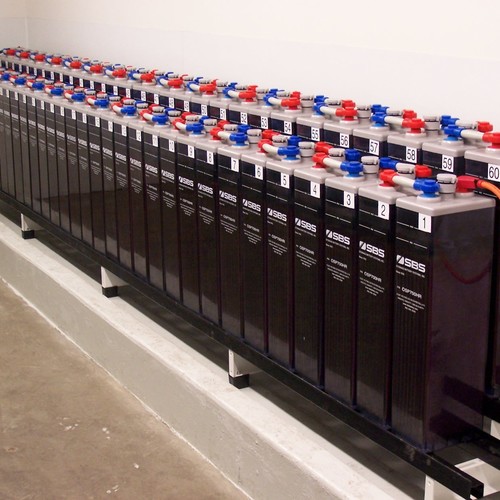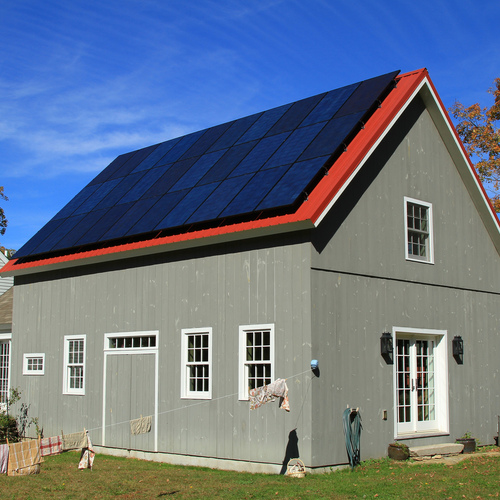
Electricity rates are going up. The cause is clear: the price of natural gas skyrocketed after Russia invaded Ukraine. The increases in residential electricity rates haven’t been uniform, however; in some U.S. states, rates are up slightly, while in others, prices have jumped sharply. The price spikes have been especially painful in Europe, where electricity rates are significantly higher in almost every country, including France and the United Kingdom.
Since the price of photovoltaic (PV) panels and battery systems continues to drop, it’s time to take a new look at an old question: Have we reached the point where a PV-plus-battery system is cheaper than grid power?
Location matters
There is no simple answer to the question, “Is PV cheaper than the grid?” Residential electricity rates vary widely in the U.S. Prices in low-cost states like Utah (11.2 cents/kWh) and Idaho (11.4 cents/kWh) are less than half those in high-cost states like Hawaii (44.1 cents/kWh) and California (29.0 cents/kWh). Clearly, a PV-plus-battery system will become cost-effective in Hawaii before it does in Utah.
But here’s a clue that PV-plus-battery systems are getting cheap enough to compete with grid electricity in states with high electricity rates: a rooftop solar installation company called Sunnova Energy has submitted an application to the California Public Utilities Commission (CPUC) for permission to create a “micro-utility” powered by PV and batteries to provide electricity to residential customers.
Sunnova Energy wants to partner with a residential developer to build a community of new homes powered by PV and batteries. According to The New York Times, Sunnova Energy “said it would offer those residents electricity that was up to 20 percent cheaper than the rates charged by investor-owned utilities like Pacific Gas & Electric and Southern California Edison.” The article continued, “Sunnova says…
Weekly Newsletter
Get building science and energy efficiency advice, plus special offers, in your inbox.

This article is only available to GBA Prime Members
Sign up for a free trial and get instant access to this article as well as GBA’s complete library of premium articles and construction details.
Start Free TrialAlready a member? Log in















10 Comments
Is the cost for PV plus batteries really dropping? Doesn't seem like it in NE US.
Stephen,
The cost of PV-plus-battery systems has certainly dropped significantly over the last 10 years, although not (to the best of my knowledge) over the past year. The long-term trend for the price of these systems is certainly downward, although materials shortages right now have caused prices to plateau or rise.
> If peak shaving occurred for demand above 3 kW per house, deploying batteries individually for 20 houses would require 120 kWh of storage. By contrast, deploying batteries collectively would only require 7 kWh, the researchers said. Sharing batteries or having one battery per 20 houses would be a less expensive approach to providing these services.
At first I was incredulous about the claim of needing only 7kWh for the micro-utility vs 120kWh for individual batteries for 20 houses - a 20x reduction in required battery capacity seemed way too optimistic, but then I realized that the 7kWh includes *only* peak-shaving for the 20 houses, not battery backup like the 120kWh of batteries on individual houses provides.
Peak shaving is of course valuable - depending on how variable the local electrical rates plans are, it could reduce bills by maybe 10-20%.
But it's a very different feature than battery backup during a grid outage, which is what 120kWh (or 6kWh per house) gets you. Their system can't realistically provide battery backup for 20 houses with only 7kWh of battery storage.
Which brings me to the price. The average CA home today uses 6000kWh/year in electricity. A 4kW PV array would provide 80% of that that and cost $12k and provide all the economic benefit of the micro-utility and also like a micro-utility it would not provide battery backup during an outage (at least not for any useful amount of time, as 7kWh would supply 20 houses for an hour maximum, and that's assuming they cut back to minimal usage, like 300W average per house).
Adding a typical backup battery to that system would roughly double the price to $24k. If a homeowner can afford to spend $16-20k on a micro-utility, then why wouldn't they either just go with PV-only on their house which is much cheaper and provides the same energy bill savings, or spend the extra few thousand for a solution that also provides dedicated backup to their own house?
Note: All prices above are assumed to be before any federal/state incentives/rebates
Dan,
You're right that it remains to be seen whether Sunnova Energy can make good on its economic projections for the micro-utility it is proposing. But in your analysis, you confused two different reports.
The hypothetical example of the 7 kWh system was proposed by New Zealand researchers; that analysis was, indeed, based on peak shaving benefits. But the New Zealand researchers' analysis is not connected in any way (other than the fact that the researchers were discussing PV-plus-battery systems) with the Sunnova Energy proposal. So you shouldn't use the 7 kwh battery sizing proposal from the New Zealand researchers to judge the validity of Sunnova Energy's plans.
Ah, thanks for correcting me Martin. Indeed, I got my wires crossed between the NZ study and Sunnova.
For $16k-$22k/house, I hope that Sunnova provides a solution with at least a full day of backup per house (if not more) in the event of a grid outage.
What's the lead picture exactly? Is that for real or is it photoshopped? I tried to find another picture of the Philadelphia Naval Yard battery storage system and what I found looks very different:
https://www.citizensenergy.com/post/michael-kennedy-dedicates-battery-storage-project-at-the-philadelphia-navy-yard
Charlie,
The photo I used is, admittedly, not particularly recent. I borrowed it from a 2013 article written by Alex Wilson, "Solar Energy Can Make the Grid More Resilient."
Blame the photo recycling on my lack of a budget for photos and art. That said, the 2013 photo does depict part of the battery storage system at the Philadelphia Naval Yard. Your more up-to-date photo (showing what I assume to be is an expanded battery storage system at the same site) shows that the Philadelphia Naval Yard is still using recycled shipping containers, painted white, to house their batteries -- just as in my older photo.
I understand the fact that GBA has a limited budget, and the picture does serve the purpose. From Google Maps streetview, the demonstration project that the pictured battery was part of has been torn down and it's back to being an empty lawn. The actual system had a bunch of other equipment next to the battery system container, as well as a demonstration house powered by the system, a context that would have made it seem more believable than the single box plopped down in the middle of a campus lawn.
Can anyone recommend a solar company for a residential installation in Fairfield County, CT? Thanks
Andy
Interesting article. What is refereed to as "peak shaving" I think I would call "time averaging". It's a common thing to do. For instance, if the amperage of all the circuit breakers in an electrical panel are added up, they almost always exceed the rating of the panel. It is assumed that no homeowner is going to run all their circuits at max amperage at once. Also in terms of the bandwidth delivered by cable internet. The capacity of the cable in terms of bps is a lot less than the combined promised bandwidth at each house that the cable serves. Same thing again for cell phone service.
I live in Central CA. We would love to get some system that protects us from electrical outages. I considered a propane powered generator. But propane is a byproduct of the distillation of oil for gasoline. So how much longer is propane going to be readily available or affordable?
I've sort of sniffed around for a PV/battery backup system. But it looks like that might cost $80k or more. That's a bit out of our budget, to put it mildly.
So no decision as yet.
Log in or become a member to post a comment.
Sign up Log in